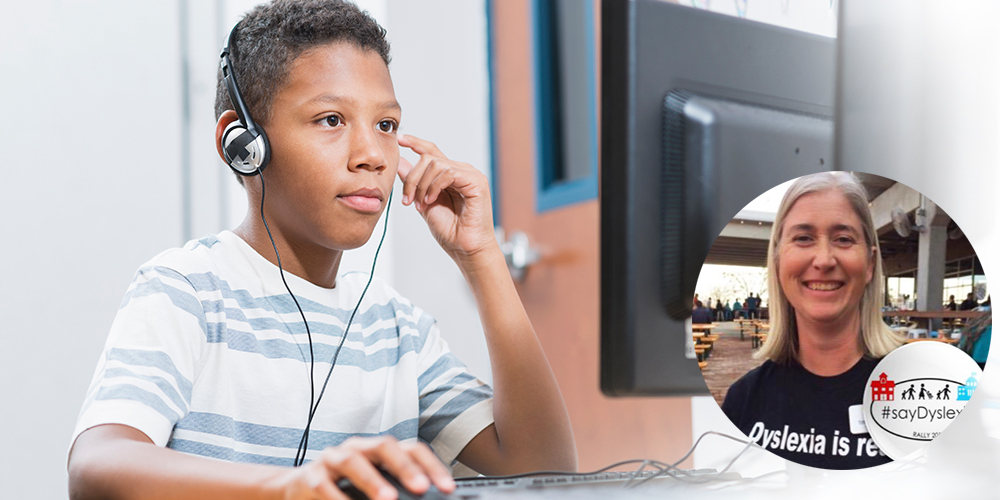Tiffany Jenkins shares five tips for putting students with dyslexia on the path to reading success.
Tiffany Jenkins is a triple threat when it comes to dyslexia: she is a Certified Academic Language Therapist (CALT); mother of a son with dyslexia; and she has dyslexia herself. In other words – she knows her stuff. Academic Language Therapists screen and prescribe various methods to remediate written-language disorders, including dyslexia. Tiffany helps students in private practice and also works with teachers and students in a school setting. Her experience gives her a unique perspective because she also has dyslexia. I recently talked to Tiffany and she shared five tips from the trenches for putting students with dyslexia on the path to reading success.
Five Tips to Reading Success
1 – Obtain a Specific Diagnosis: Needs Drive Services
Tiffany’s mantra is “needs drive services,” so the first step is to obtain a specific diagnosis. “You can’t just say that Sally has a reading problem. That doesn’t get us where we need to be,” says Tiffany. She does basic screening on phonemic awareness and encourages students to get a formal diagnosis from a speech and language pathologist (SLP), school psychologist, or other qualified professional. A more prescriptive diagnosis, for example, might reveal that Sally needs instruction on phoneme substitution or syllabication work.
2 – Build Bridges with Accommodations
Accommodations are the bridge that supports reading intervention and remediation. “Assistive Technology (AT) builds the bridge to content while the student and teacher put in the work building reading skills through systematic instruction. Teachers still need to have conversations about vocabulary, genre, background knowledge, and content to build comprehension skills,” she says.
3 – Start Simple with Easy Books
Tiffany urges teachers not to throw students into the deep end right away. “Start with easy books they want to read during free reading and then progress to more challenging books including textbooks,” she says. For younger students, she recommend they start by reading books using digital text and audio so they can track the words, and then switch to listening only to alleviate mental fatigue.
4 – Find a Reading Tool that is Pleasurable to Use
For example, she recommends pairing Bookshare with Voice Dream Reader so students get digital text plus audio to support multimodal reading. “Bookshare opens students’ ability to enjoy a book beyond their capabilities until intervention clicks for them. No child should be told they can’t read a book beyond their level,” says Tiffany.
5 – Be Patient
“We’re not going to build the bridge in one day. The process may take awhile, but students can get beams across and experience progress in a few months. Bookshare is one of the beams on the whole span going across the river, but you can’t just turn it on and expect instant success,” says Tiffany.
More Insights from Tiffany
Next week, Tiffany discusses the benefits of digital voices, books for reluctant readers, and success stories about the fabulous social experiences students get from being able to discuss cool books. Stay tuned and be sure to subscribe to the Bookshare Blog to be notified when Part 2: How to Get Reluctant Readers Hooked on Reading is released.
Are you interested in learning more about a reading solution for students with dyslexia? Try Bookshare.
Tiffany Jenkins is an advocate and therapist for students with dyslexia, encouraging interventions and assistive technology to meet their learning needs. She lives in Oklahoma and is a member of Bookshare’s Advisory Committee. @tdcraw


Are there additional voices that can be selected? I have many interested students that really want to have audio books, but do not like the automated “robot” type voice.
Any suggestions?
Thank you.
Choice of voices will depend on how you are accessing the books. Are you using a computer, iPad, or other device? I love VoiceDream on the Apple devices, so many voices available. I have a different voice for different tasks, especially for auto biographies to match the author.
I have Microsoft Chromebooks that are Android based, not Apple, do you have any recommendations for changing the voice on a Chrome browser?
Super interested in this very question.
What does Voice Dream reader do instead of the reader Bookshare comes with? Are the voices more realistic, my child does not like the robotic tones. Just asking since it does cost $15 but I can’t tell what the difference is. Thank you!!
Sara: Voice Dream Reader is very popular with Bookshare members and offers many more features than the basic Web Reader. It offers 61 high-quality voices, 1 free premium Acapela voice, and 100 more premium voices for purchase. It offers word and sentence highlighting, annotation capability, the ability to adjust font size/color, and audio controls. Plus it reads almost anything: PDF, Word, web pages, etc. It is well worth the price. https://www.voicedream.com/reader/
Hello Tiffany. What do you mean by this: “Teachers still need to have conversations about vocabulary, genre, background knowledge, and content to build comprehension skills”? How long should this conversation last per new reading assignment?
Lee: I notified Tiffany about your question so she should respond soon. Thanks for your patience.
Thank you, Laura!